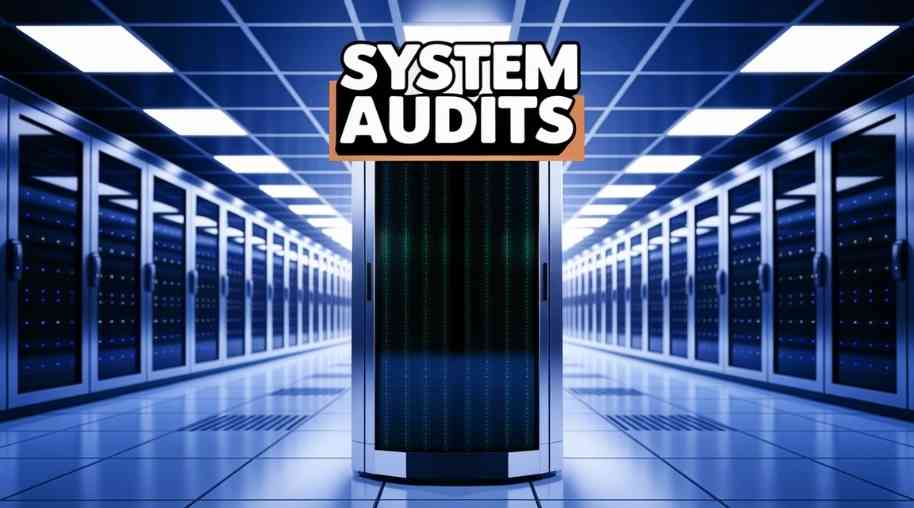IISA Full Form-Information System Audits
by Shashi Gaherwar
0 2031
Information System Audits: Ensuring Security, Compliance, and Efficiency
Introduction
In today's digital age, organizations rely heavily on information systems to manage data, operations, and business processes. However, with increasing cyber threats, regulatory requirements, and data privacy concerns, ensuring the security and efficiency of these systems has become crucial. This is where Information System Audits (ISA) come into play.

An Information System Audit is a systematic evaluation of an organization's IT infrastructure, policies, and operations. The primary goal is to assess security, identify vulnerabilities, ensure compliance, and optimize system performance. This article explores the importance, process, benefits, and challenges of conducting an information system audit.
What is an Information System Audit?
An Information System Audit is a structured examination of an organization's IT controls, policies, and procedures to ensure:
- Data Security and Privacy: Protecting sensitive information from unauthorized access.
- Compliance with Regulatory Standards: Adhering to laws and industry regulations.
- Efficient IT Operations: Optimizing system performance for business needs.
- Cybersecurity Risk Mitigation: Identifying and addressing potential cyber threats.
These audits help organizations detect vulnerabilities, prevent cyber threats, and align IT operations with business objectives.
Objectives of Information System Audits
An IT audit focuses on key objectives such as:
- Security Assessment: Identifying vulnerabilities in IT infrastructure.
- Regulatory Compliance: Ensuring adherence to laws like GDPR, HIPAA, ISO 27001, and PCI-DSS.
- Data Integrity and Availability: Ensuring information is accurate, complete, and available when needed.
- Operational Efficiency: Evaluating IT processes to enhance productivity and cost savings.
- Risk Management: Detecting potential cyber threats and system weaknesses.
- Business Continuity: Assessing disaster recovery plans and backup solutions.
Types of Information System Audits
- Compliance Audit: Ensures the organization follows legal and regulatory requirements. Examples: GDPR, SOX (Sarbanes-Oxley Act), HIPAA.
- Security Audit: Focuses on cybersecurity policies, firewalls, encryption, and access controls. Evaluates network security, malware protection, and incident response plans.
- Operational Audit: Assesses IT operations, performance, and resource utilization. Identifies inefficiencies and areas for process improvement.
- Financial Audit (IT Controls Audit): Ensures financial systems and transactions are secure and accurate. Used in banking, fintech, and enterprise accounting systems.
- Forensic Audit: Investigates fraud, cybercrime, and data breaches. Helps law enforcement and legal proceedings.
- System Development Audit: Reviews the software development lifecycle (SDLC) and ensures IT projects meet security and compliance standards.
The Information System Audit Process
- Planning and Risk Assessment: Define audit objectives and scope. Identify key IT assets, risks, and compliance requirements. Develop an audit plan and checklist.
- Data Collection and Evaluation: Review IT policies, security controls, and access management. Conduct penetration testing and vulnerability assessments. Evaluate backup and disaster recovery mechanisms.
- Testing and Analysis: Perform IT system testing, including firewall configurations, authentication mechanisms, and encryption standards. Assess user permissions, data logs, and software security patches.
- Reporting and Recommendations: Document audit findings, including security gaps, compliance issues, and system inefficiencies. Provide recommendations for security enhancements and process improvements.
- Implementation and Follow-up: Ensure organizations address identified vulnerabilities and implement corrective actions. Conduct re-audits periodically to maintain system security and compliance.
Benefits of Information System Audits
- Enhanced Cybersecurity: Protects sensitive information from cyber threats like phishing, ransomware, and insider threats.
- Regulatory Compliance: Helps avoid legal penalties, lawsuits, and reputational damage by ensuring adherence to laws and industry standards.
- Improved IT Efficiency: Identifies performance bottlenecks and streamlines IT processes for better productivity and cost savings.
- Stronger Risk Management: Identifies potential risks and vulnerabilities before they can be exploited.
- Business Continuity and Disaster Recovery: Ensures the organization is prepared for system failures, cyber incidents, or data loss.
Challenges in Conducting Information System Audits
- Rapidly Evolving Cyber Threats: Hackers constantly develop new attack methods, requiring continuous updates to security policies.
- Complex IT Infrastructure: Large organizations have multiple IT systems, cloud platforms, and third-party integrations, making audits complex.
- Lack of Skilled Auditors: IT audits require expertise in cybersecurity, risk management, and regulatory compliance.
- Cost and Resource Constraints: Conducting comprehensive audits can be expensive and require significant time and workforce.
Best Practices for Effective Information System Audits
- Implement a Risk-Based Approach: Focus on high-risk areas such as financial transactions and sensitive data storage.
- Use Automated Tools: Leverage vulnerability scanners, SIEM (Security Information and Event Management) tools, and AI-driven threat detection.
- Train Employees: Educate staff on cybersecurity best practices and phishing attack prevention.
- Regularly Update Policies: Continuously review and update security protocols to align with the latest threats and regulatory changes.
- Conduct Frequent Audits: Perform annual or semi-annual audits to ensure ongoing security and compliance.
Information System Audits are essential for organizations to safeguard IT infrastructure, ensure compliance, and enhance operational efficiency. With cyber threats evolving rapidly, businesses must adopt proactive auditing strategies to identify and mitigate risks effectively.
By following best practices and leveraging advanced audit tools, companies can protect sensitive data, maintain trust, and ensure long-term business success in the digital landscape.
Further Learning Resources
If you’re passionate about building a successful blogging website, check out this helpful guide at Coding Tag – How to Start a Successful Blog. It offers practical steps and expert tips to kickstart your blogging journey!
For dedicated UPSC exam preparation, we highly recommend visiting www.iasmania.com. It offers well-structured resources, current affairs, and subject-wise notes tailored specifically for aspirants. Start your journey today!

Share:








Comments
Waiting for your comments